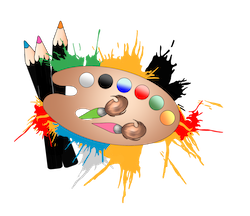Young Scientists Embark on a Perilous Journey to Rekindle a Lost Paradise
The year is 2142. The Earth, once a vibrant tapestry of life, is now a desolate wasteland. Climate change, a monster humanity had nurtured for centuries, had finally devoured its creator. Scorching deserts stretched where oceans once teemed, and the air hung thick with a choking dust. Yet, amidst the ruins, a flicker of hope remained.
Deep within a forgotten biodome, a group of young scientists, known as the "Seed Seekers," unearthed a hidden vault. Inside, nestled in temperature-controlled chambers, lay a treasure more precious than gold - the Last Seed Bank. Vials containing the last viable seeds of Earth's lost flora, a legacy from a bygone era.
Leading the Seed Seekers was Maya, a fiery botanist whose eyes held the green of a forgotten forest. Holding a vial filled with plump sunflower seeds, she felt the weight of a responsibility heavier than any textbook. These seeds held the key to a future humanity might not have.
Their only hope lay on Kepler-186f, a newly terraformed planet orbiting a distant star. The journey was a treacherous one. Their vessel, the "Mayflower II," a salvaged relic from Earth's past, sputtered through the vast emptiness of space. Fear gnawed at their hearts, but the image of the Last Seed Bank fuelled their determination.
After months of cramped quarters and recycled air, Kepler-186f emerged on their view-screen - a blue marble suspended in the inky blackness. Landing on the newly formed soil, a mixture of excitement and apprehension coursed through the group. The air was thin, but breathable. The ground, barren but fertile.
The first seed Maya planted was the sunflower, a symbol of hope and resilience. As they carefully planted each seed, from towering redwoods to delicate wildflowers, tears welled up in their eyes. These weren't just seeds; they were prayers whispered into the soil, a plea for a second chance.
Days bled into weeks, then months. Under the watchful eyes of a new sun, a miracle unfolded. A tiny sprout, emerald green and defiant, emerged from the earth. Soon, others followed, each one a testament to the enduring power of life. The barren landscape slowly began to transform, dotted with splashes of green.
Years later, Kepler-186f was no longer a desolate planet. Lush forests stretched where deserts once lay, meadows bloomed with wildflowers, and birdsong filled the air. Humanity, having learned a bitter lesson from Earth's fate, lived in harmony with the new ecosystem. The Last Seed Bank, a symbol of their past folly and their unwavering hope, stood tall as a museum, a reminder of the day they started over.
Maya, no longer a young scientist but a seasoned leader, stood amidst the towering redwoods, their branches reaching towards the sky. A sunflower, a descendant of the very first seed she planted, bloomed in her hand. Its golden petals, bathed in the warm sunlight, whispered a promise: a new beginning, not just for humanity, but for all life on Kepler-186f. The Last Seed had bloomed, and with it, a future bloomed as well.
The end.





